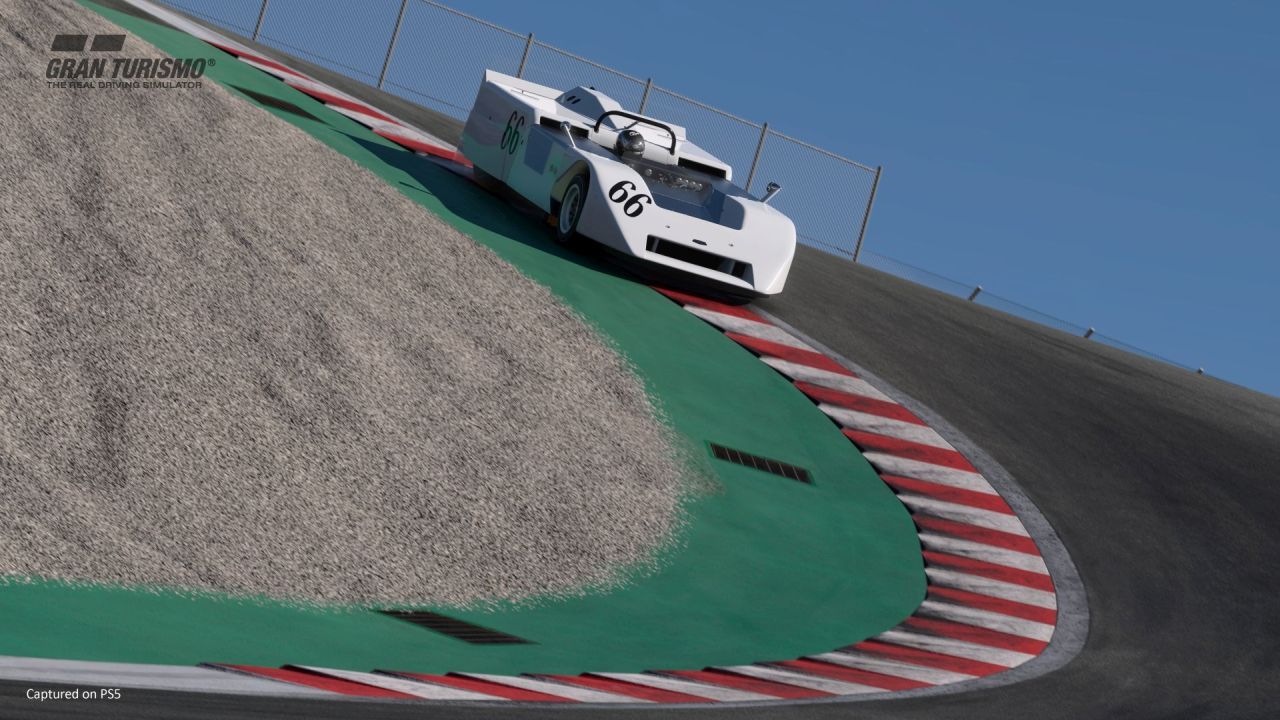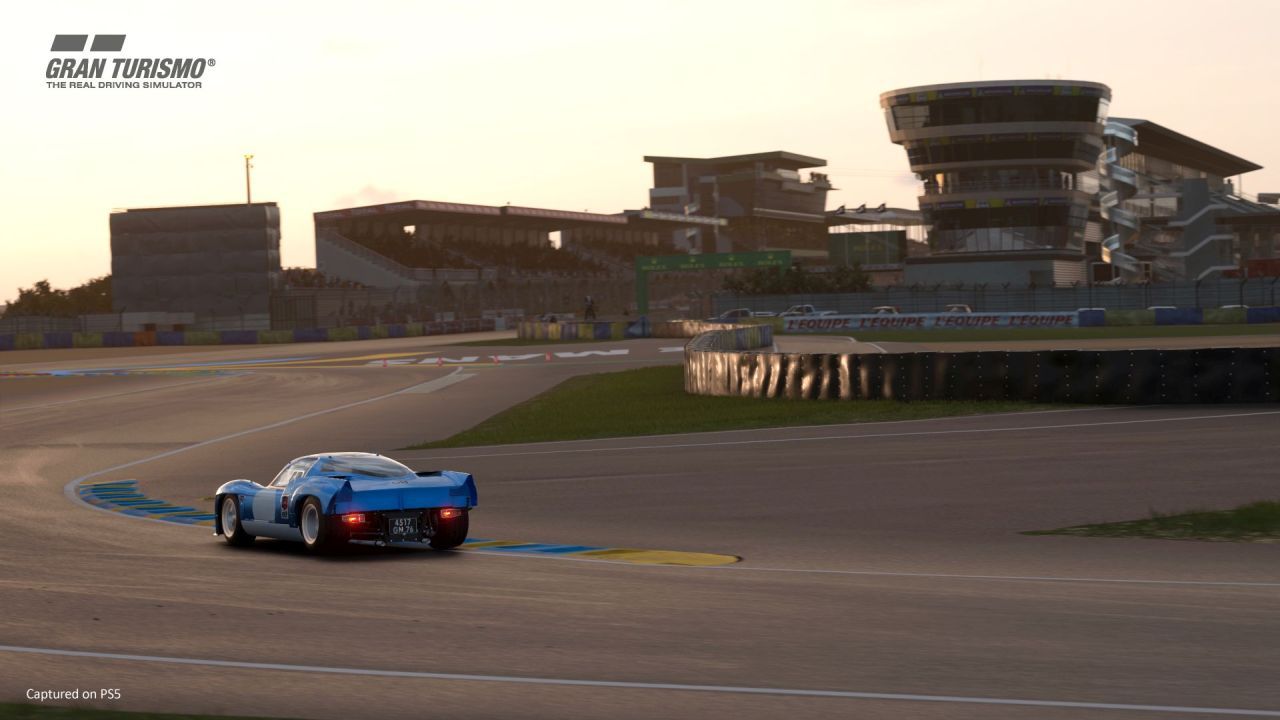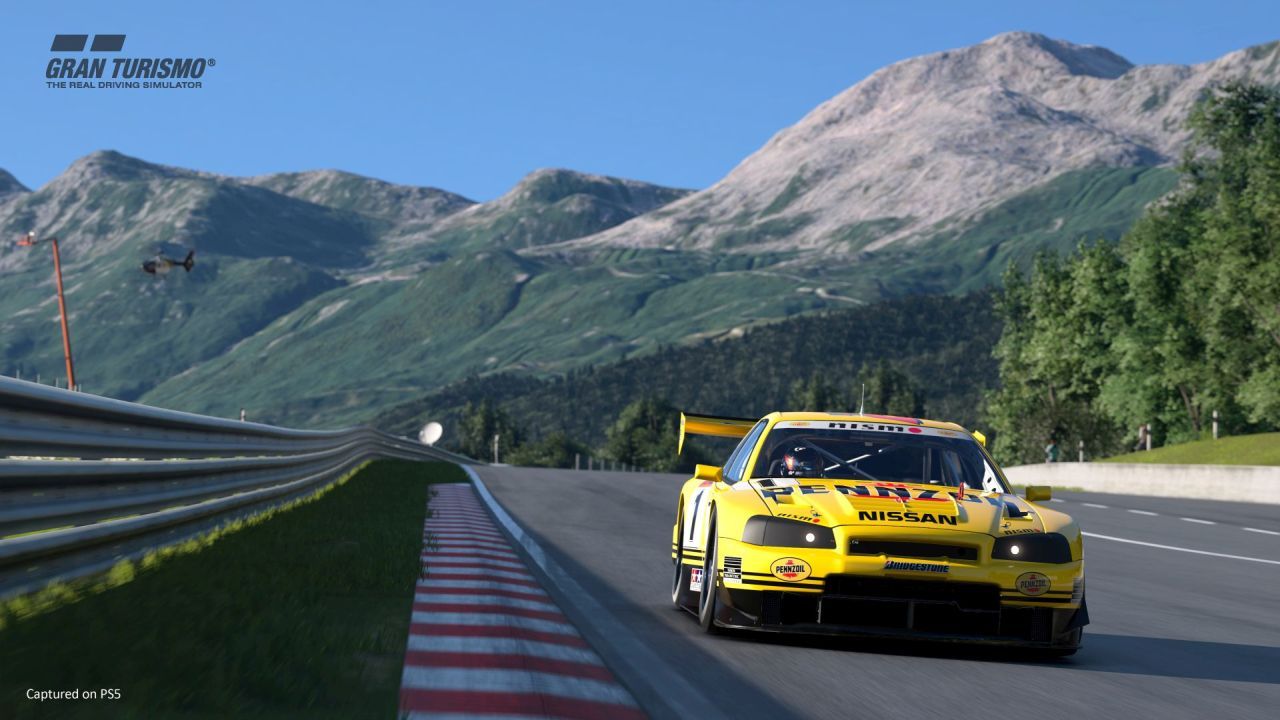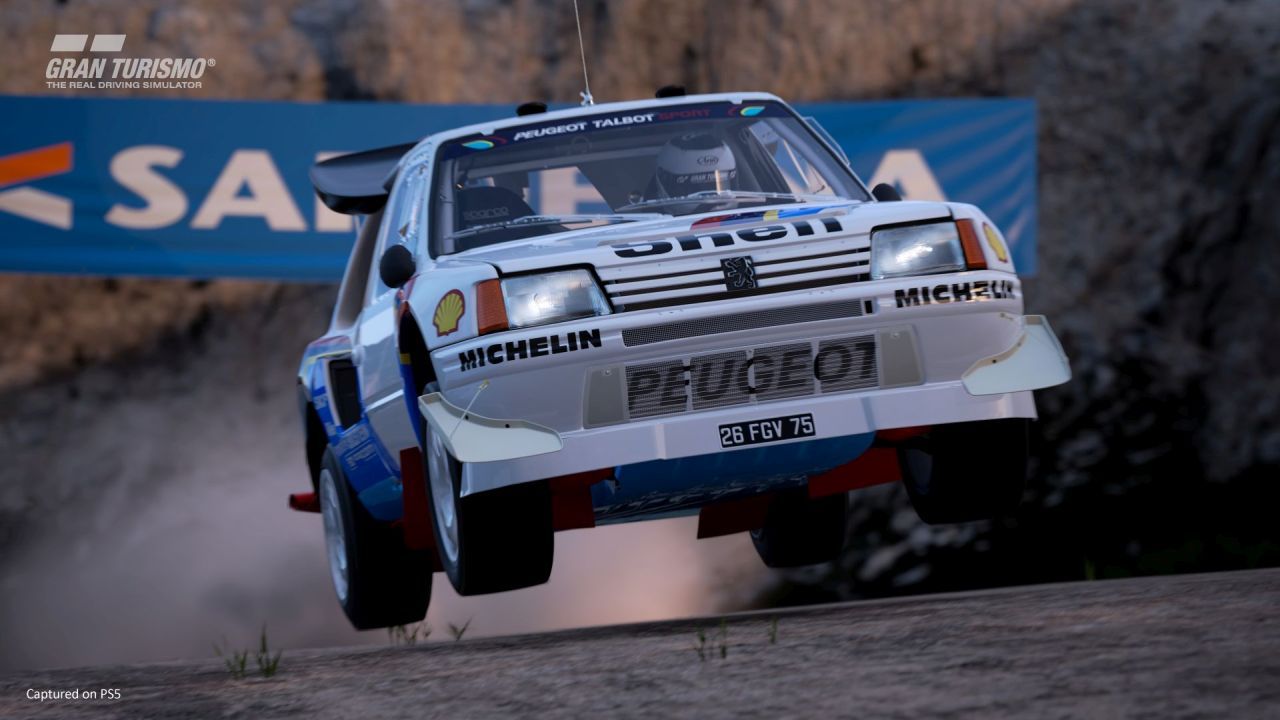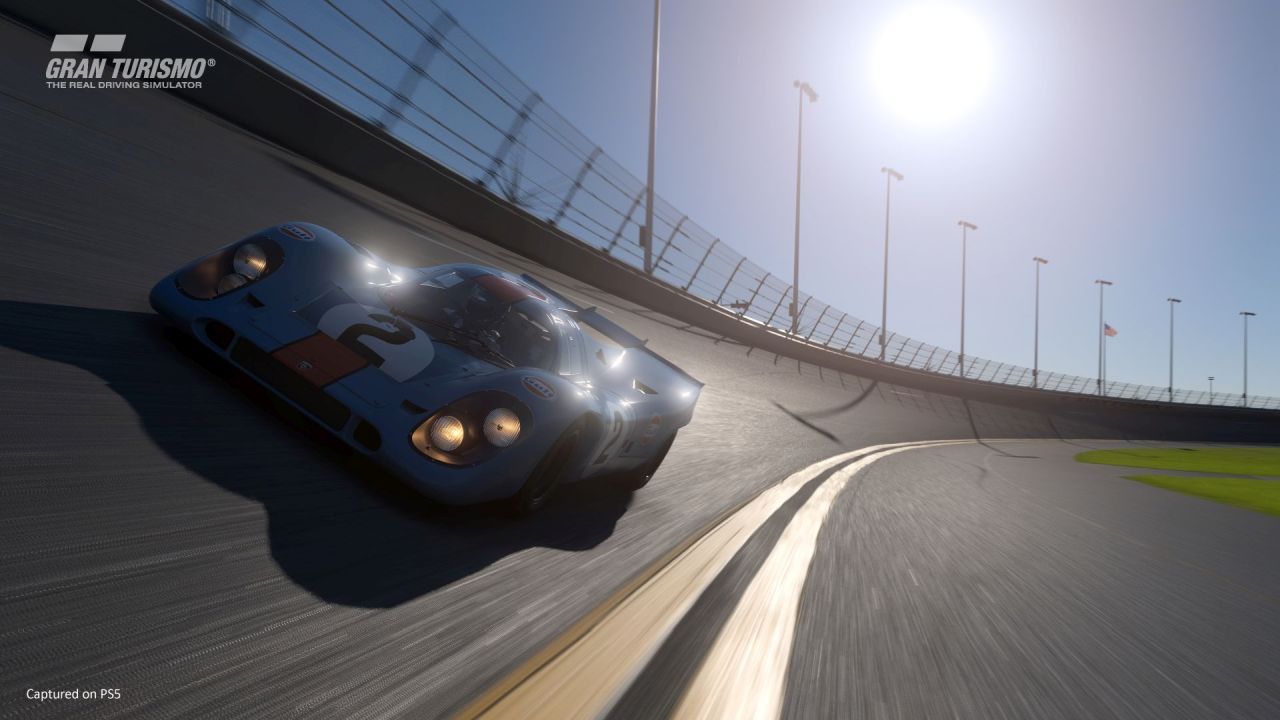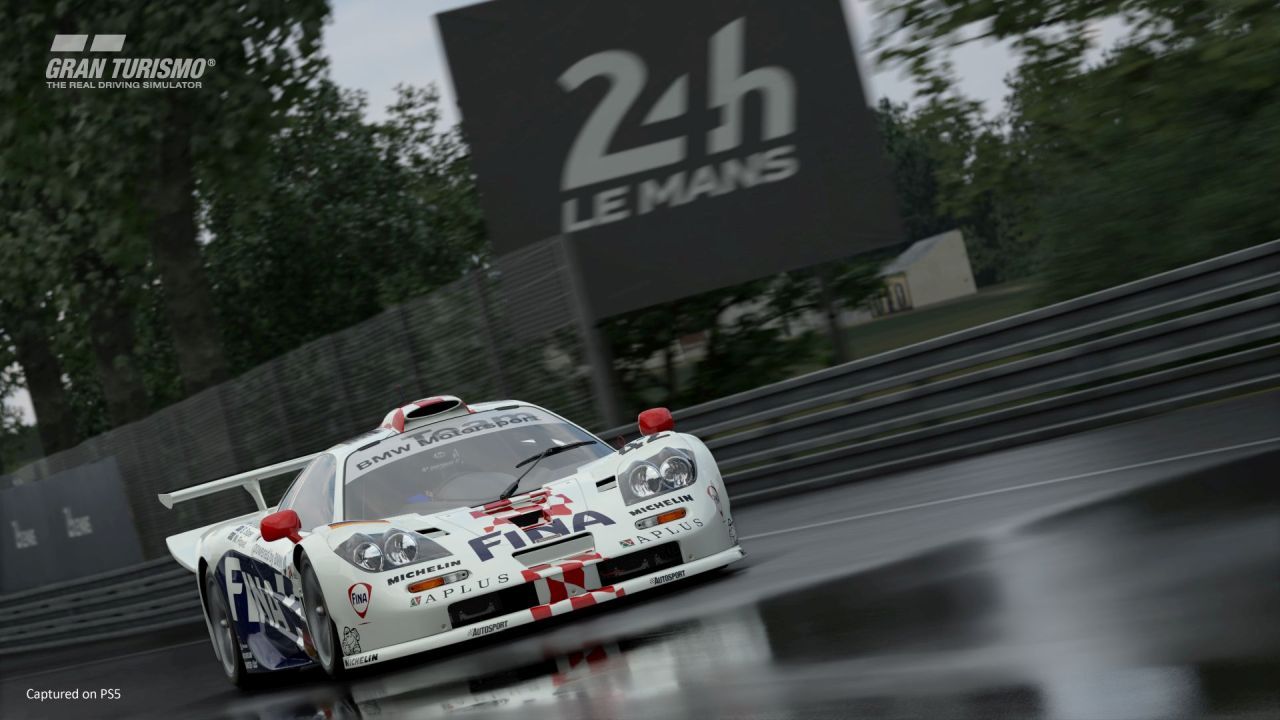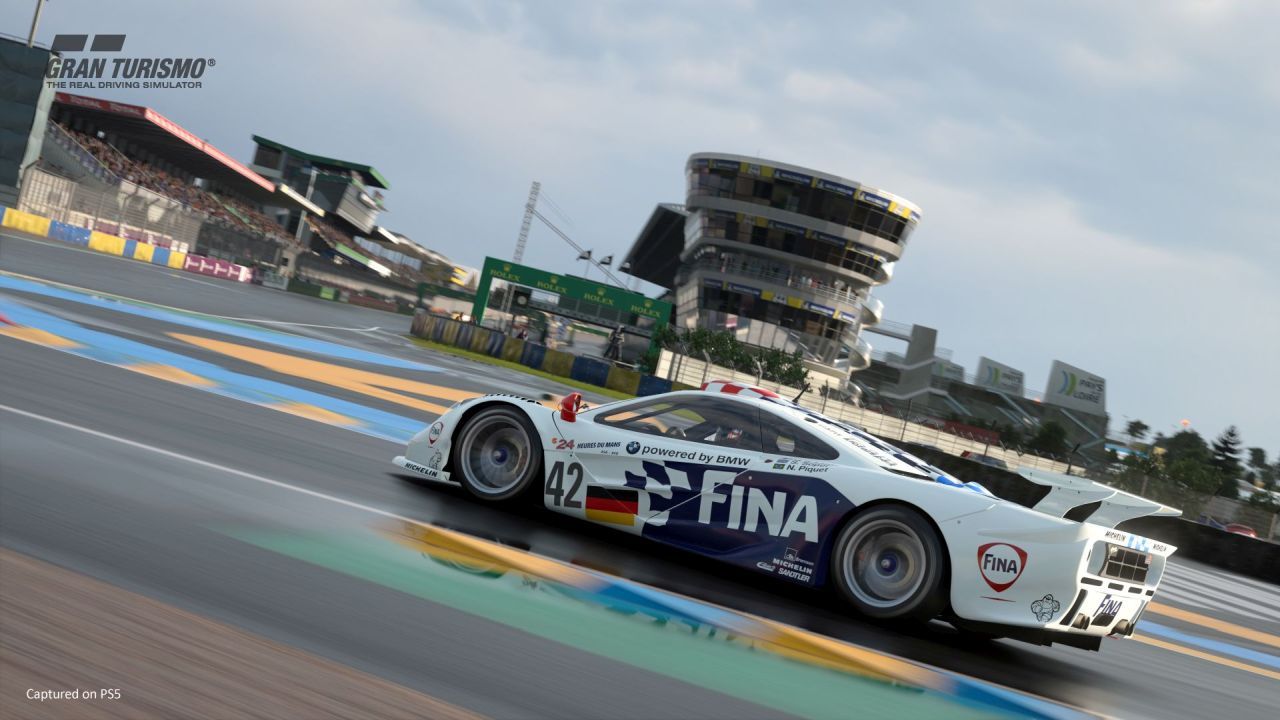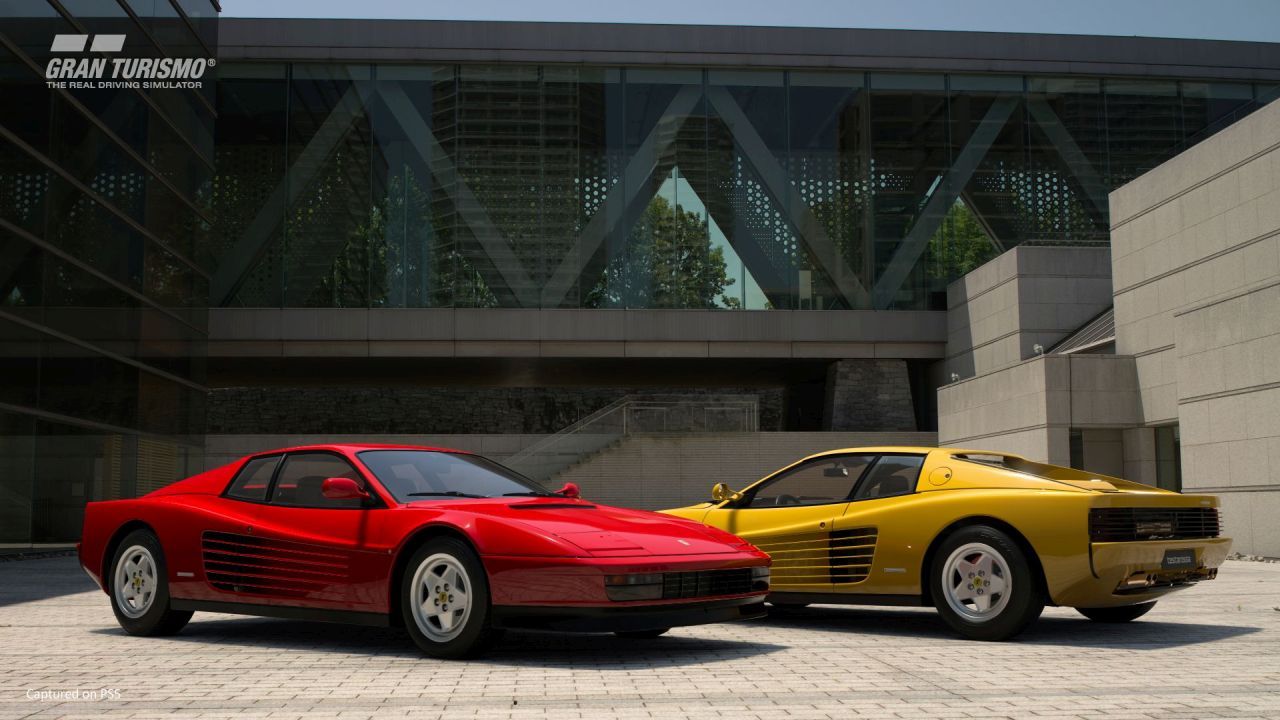The Gran Turismo franchise officially dates back 25 years and the launch of Gran Turismo 7 coincides with this. The seventh official release in the series is the culmination of Kazunori Yamauchi's dream all wrapped into one place. His passion for not only the spectacle of racing, but also car culture and the art form that is engineering is fully on display. Gran Turismo 7 manages to encompass everything that was created with Gran Turismo Sport and ties it in with a modern take on the original Gran Turismo games. With the power and tech of the PlayStation 5, Gran Turismo 7 is now the pinnacle of the series with the deepest physics realism to date.
There are so many minute details that help to make Gran Turismo 7 special that we could be here for days discussing these. It has also been nine years since the last mainstay in the series and while Gran Turismo Sport launched in 2017, this wasn't a traditional release as it focused on the eSports side of racing and added single player elements. What the original games did for car culture starting 25 years ago is unprecedented. This is showcased on the initial boot with another epic and emotional roller coaster of an introduction, which seems to be a forgotten art in video games today. I, for one, know I would not have gotten into cars if it weren't for the original GT games, and the younger crowd that's just now getting into driving haven't gotten to experience this yet, which is why Kaz has introduced The Cafe to Gran Turismo 7.
Personally, I'd love to know where I can find a coffee shop buried in the middle of the woods of some exotic location. Luca is the one running this coffee shop, and it almost seems like he's the head of a secret society of car enthusiasts as there are other knowledgeable people that are a part of this small cafe. Kaz has implemented this cafe to help new players not only learn but also provide guidance on the history of cars and on how the Gran Turismo series works. The idea with GT7 is to collect cars, which may be its only downfall. You will not be able to sell cars like you have in the past, so any duplicates will amount to only discarding the car. Luca provides goals to unlock cars and reward them to your inventory. Progressing in these events will further unlock tracks and events and racing at these tracks will open more traditional Gran Turismo events. Furthermore, completing the objectives allows Luca to tell the story of the grouping of cars that were just unlocked through beautiful in-game renderings. Lastly, the Music Rally is a fun mini game that has you racing to the beat of the songs that are playing. This also coincides with the replay as the cameras are dynamic. It's a fun change of pace and I found myself getting into the moment.
All the events in GT7 are housed under each track, whether it be arcade racing, time trials, drift trials, the return of Circuit Experience and the new Meeting Place. Circuit Experience allows player to learn the tracks through individual sections. The Meeting Place is an online racing spot for players to join in, do free runs and talk about their cars and setups. The hope is to garner good conversation about cars and for it to be a learning tool for many players out there on how to race or upgrade cars in general. Custom races can also be setup here. License tests return and these will have you take more and more powerful cars on weak tires to pass the tests and race in better races. Some of these tests are also rally events and while they're not ridiculous to pass, getting gold is another story. Another new gameplay option are the Mission Challenges, which are separate from Luca's. These can include even drag racing, which hasn't been seen in the series since GT4. These allow other ways to play fun mini games and experience a separate side of the game.
While I understand the design logic with the game and The Cafe, players looking to just jump in and buy cars and race in a ton of different events may not be a fan. Logging over thirty hours into the game thus far, I'm just now finishing with The Cafe portion. It can be a long process especially if you're tasked with racing a set of cars you don't care for. There are ways to still branch out like running GR Cups or group races that pay more, but the overall progression is tied to leveling up your Collectors Level, and The Cafe is still the best way to do this. Unfortunately, multiplayer options (including split-screen) aren't unlocked until around Level 8 or so. This will easily be forgotten about once achieved, but this does seem like a forced guiding tool. Car upgrades aren't even available immediately, but like traditional Gran Turismo games, you'll initially choose a cheap car to race with and work your way up.
Speaking of car upgrades, tuning returns with a different focus this time around. Performance Points, which have been seen in the past, are what dictates specific races you can or can't participate in. Rather than using a horsepower rating and the fact that there are over sixty separate performance parts for each car, players can have different builds to achieve the PP. Even in the tuning menu, there's a "Dyno" that measures your PP based on the settings you change, and it's immediate. These sixty parts do include official Brembo Brake packages as Brembo has been licensed for the game along with Michelin and BBS. What isn't included as part of those 60 parts are the separate 650 aerodynamic parts, 130 different wheels and 1200 colors of paint that can be used for custom liveries. Roll cages and body modifications are available with some cars offering full engine swap upgrades. This is the traditional upgrade path from Gran Turismo games that fans have been craving for some time. Adding variations to how you upgrade helps to bring a new dynamic to your project other than what has the most horsepower. You'll be winning races in your 1965 Mini Cooper in no time.
Almost every major form of motorsport is here that includes traditional road racing, GR (GT), formula cars, trucks and more. What makes Gran Turismo 7 stand out the most is the latest driving model that has been implemented to the series. Tires and brakes play the biggest aspect as stock tires and brakes will have you fighting the car with no assists on. Each car leans with how its weight is transferred and this includes hard braking. The car will transfer the weight forward and this amounts to unpredictability on entering corners. Every car is distinctly different on how it handles based on the weight transfer and on the amount of grip. To double down on this, Polyphony Digital has implemented aerodynamics information generated from CFD to make this more realistic. The game takes wind direction into effect, that can affect handling, and setting front and rear car height that will also affecting handling. Every little change to your setup has an effect on your individual car in Gran Turismo 7.
Car upgrades are pertinent for getting better laptimes. It's not necessarily about being faster, but more importantly, having a more stable ride to help get that power to the ground. Grip is the most important aspect of this game especially when doing specific class races. There's no point in having the fastest car if you can't complete a lap. There are assists for non-advanced players, but you're not going to get that same downforce and grip you had in GT Sport. The GR cars are the best to be confident with when it comes to grip, but even carrying too much speed into a corner that can't be covered by the brake pressure can send you into a barrier. This game will take more skill to be better but has the option for players looking to learn the craft.
Wet racing in Gran Turismo 7, and weather in general, is its greatest implementation. For one, there's a new radar map option during the race to watch for oncoming rain. Rain can exist on a part of the track where as its dry on others. It can rain and be sunny, as well. Puddles will pop up on certain parts of tracks along with dry lines that need to be maintained for maximum grip. It adds such a new dynamic to not only the series, but racing games in general. The game will not equip you with wet tires as these need to be purchased separately, so you may be doing some driving on stock road tires or on slicks if you're not careful. For some reason, the game doesn't provide you with a weather report prior to racing. You just have to see if there's rain coming down before you start the race. No race is the same due to the cloud formations, the time transitions and the weather. Even the specified star constellations look beautiful and the best way to experience this is going down the backstraight at Mount Panorama at night. The game as a whole is designed to provide discipline on using the gas pedal, and the DualSense controller does an excellent job of helping with this.
The DualSense is just what the doctor ordered for those looking for an improvement to the controller experience. The Adaptive Triggers on the DualSense, much like other racing games, allows for resistance in certain braking and accelerating situations. Polyphony Digital has implemented the proper way for brake pressure by offering the resistance up front rather than having free play down to a point. Braking is difficult to judge and it takes time on the DualSense to adjust, and this also pertains to individual cars and setups. Accelerating is straightforward, but when the car loses traction, you'll fight this with the resistance that's presented to the R2 button. To make the experience deeper, every time the car transmission shifts, the controller offers an intuitive hard vibration. You'll feel subtle vibrations while the tires are on the ground providing force. Even hitting the bumps in Tokyo are felt on the controller. It's a deep experience that brings racing to the modern age.
Using the Fanatec GT7 DD Wheel, the experience is furthered as a wheel is still the way to go. Being able to countersteer with a direct drive wheel feels special based on how these cars handle. Opening up the accelerator and hearing turbos or superchargers kick in is so satisfying. The vibrations feel right in the wheel, but the settings needed to be cranked in the game. There are options for specific wheels in the game once again. Mapping for the MFD was not initially set especially with having all these options on the GT7 DD Wheel, but that was a quick adjustment. Braking actually feels more consistent as compared to using the DualSense when using a wheel, which is a bonus in itself.
The AI, while improved with workarounds, still remains a Gran Turismo legacy issue. Much like the single player did in GT Sport, the leader tends to get far ahead as you're more or less racing against time and trying to avoid the slower cars in front. It's cool to see the AI actually lose traction around corners or even spin out, plus you will see slipstreams and overtakes from the AI. Polyphony Digital has given a face to the names as you can view a quick excerpt from the top competitors in each race to give you a background on them, most of which are high-ranking GT players. Being able to run into cars with no repercussions to save a corner, however, is still a thing. The AI will also not recognize you're there to the point that they'll run straight into you from behind. With the eventual implementation of Sony's new AI on the horizon, this should hopefully be alleviated. Playing in higher classes, however, will see a more difficult AI. There's an option to choose the AI difficulty level and even on the hardest it wasn't much of a battle.
Gran Turismo 7 is offering 400 cars at launch, which is a good total number of cars. This doesn't tell the complete story, though. The series has always been known to include multiple variations of one type of car, which continues here. Most of these cars seem to have been ported over from GT Sport with some even missing such as the Dodge Challenger. Strangely, there's a Hellcat Charger and the Safety Car Charger, but for once the American cars are lacking. A good bit of cars are GR cars, but these are mostly seen in the new car section. What returns is the Used Car market, where classic cars pre-2000 will show up dynamically with pricing that mimics today's actual market. Sales will also exist on these used cars. You will also receive invitations to buy new cars such as a Bugatti Veyron. It's disappointing that there aren't more new cars in here such as the new Corvette, but the new Nissan Z and the Ferrari F8 Tributo are present. There is hope for growing this based on the consistent content updates from Sport, which should continue here.
On PlayStation 5, Gran Turismo 7 is the best-looking version to date. Car models, both exterior and interior, are the most detailed and beautiful cars ever seen in a game. The reflections are blinding when the sun hits certain angles, and it stands out more when there's chrome involved. Those that complain about the lack of damage in the game are going to remain the same. Cars will get dented and scuffed, but this is a game that shows automobiles as an art form rather than an arcade racer. Environments are full of more assets with the inclusion of 3D grass. The crowds look more detailed and full of life. There are still issues with assets at a distance such as on a mountain.
There has also been some confusion as to the implementation of Ray Tracing, and even the game wasn't completely clear on it. Ray Tracing only exists in Scapes (photo mode which returns), replays and cutscenes. You can choose to prioritize frame rate or Ray Tracing, but it only affects those scenes. Otherwise, you are locked in at 4k and 60 FPS for the racing portion. Some of the reflections look so good that it was hard to question if it was utilizing it. The PS4 version is also no slouch as on the Pro it looked almost as phenomenal and that's a bright spot for the previous generation.
The audio in this latest version seems to have made the greatest strides from in the past. Cars, no matter the engine, sound aggressive and more realistic. The V8s, while improved, still aren't on par with the quality of the others. The cockpit views give the best engine noise. GT7 uses Tempest 3D Audio Tech for positional audio that includes sound reflections off of barriers, car positioning and even hearing the train alongside the track in Tokyo. Exhaust backfires can also be heard from behind and the game does an excellent job of blending your engine audio with what is around you. This helps to identify if someone is coming up behind you and on which side they're attempting to pass. The soundtrack stays firm to the atmosphere that Gran Turismo has provided in recent years. Some rock, obscure electronic music and more help set the artsy atmosphere that the series provides.
The multiplayer aspects carry over everything from GT Sport and add some. As previously mentioned, the Meetings Rooms for each location allow for a laid-back atmosphere. Players can also do split-screen racing, host Lobbies and jump in and out of races. The traditional format from GT Sport remains and players can expect servers to be just as good. Daily Races return and the fact that after five years the previous game remains to have a plethora of users bodes well here. It's just going to depend on who branches off to do Lobby racing as compared to the Daily Races.
Closing Comments:
Gran Turismo 7 is the quintessential Gran Turismo and the best of what the series has accrued over its 25 years of existence. The game is beautiful, detailed and fresh, powered by a detailed handling model that's yet to be seen in racing games. It's also worth adding that this is the fastest loading Gran Turismo when played on the PS5. While games like Assetto Corsa and Automobilista may take into account every little aspect for simulation, they're not doing road cars like Gran Turismo does. The addition of The Cafe may split people, but it's a great way to bring in new players and freshen up the experience. Learning about the history of cars and rivalries helps to cultivate the automotive culture. The weather system and the fact that no race will look the same based on the lighting and cloud formations should help alleviate any thoughts of redundancy. Gran Turismo 7 is the ultimate culmination of Kazunori Yamauchi's vision and can do the same things for today's youth as it originally did 25 years ago.
Gran Turismo 7
Reviewed on PlayStation 5
- Franchise
- Gran Turismo
- Platform(s)
- PS4 , PS5
- Released
- March 24, 2022
- Developer(s)
- Polyphony Digital
- Publisher(s)
- Sony
- Genre(s)
- Racing
- ESRB
- E for Everyone: Alcohol Reference, Use of Tobacco
- Number of Tracks
- 108
- Number of Cars
- 484


